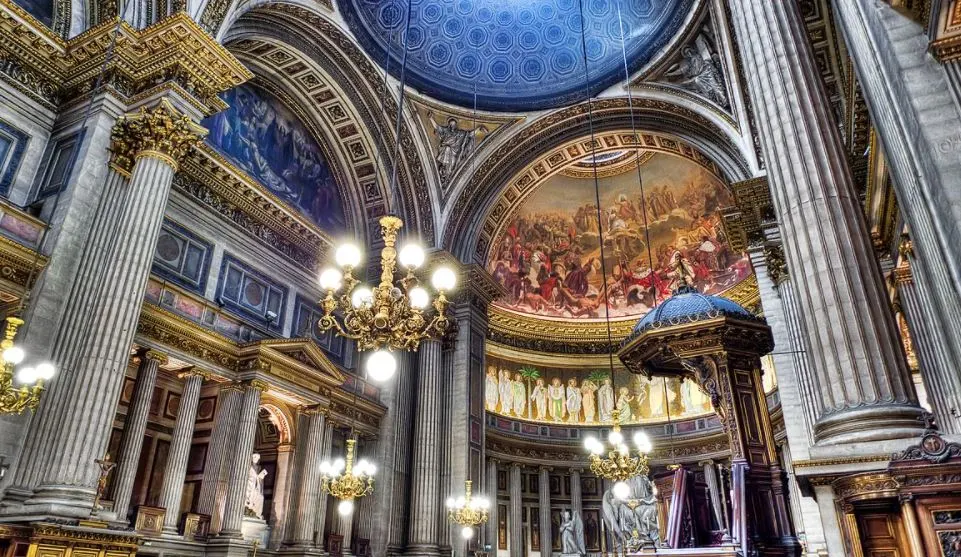One of the most astounding churches in the world can be found right in the historical heart of Paris.
In this post, we’ll take a closer look at some interesting facts about La Madeleine, one of the most amazing buildings in the capital of France!
1. It’s situated in the 8th Arrondissement of Paris
La Madeleine, known officially as “Église Sainte-Marie-Madeleine” or “Church of St. Mary Magdalene,” is a church in Paris that initially appears to be an enormous ancient Greek or Roman temple but which actually serves as a Roman Catholic church.
It was built in the 19th century as one of the first Neoclassical buildings that remodeled an ancient temple in its entirety instead of just the portico such as the Panthéon in Paris.
It’s situated in the 8th Arrondissement of the city which is located right in the heart of Paris. Just to the east, we can find the “Place Vendôme,” a famous square that features the “Colonne Vendôme.” The Palais Garnier is situated just to the northwest, and the church is directly connected to the Place de la Concorde via the “Rue Royale.”

2. The site was originally occupied by a 17th-century church
The location of the church isn’t a coincidence because there used to be a church located here since the 17th century. This church was dedicated to Mary Magdalene which is why the current church is named the way it is.
This earlier church was eventually demolished in the year 1799 to make way for this magnificent temple.
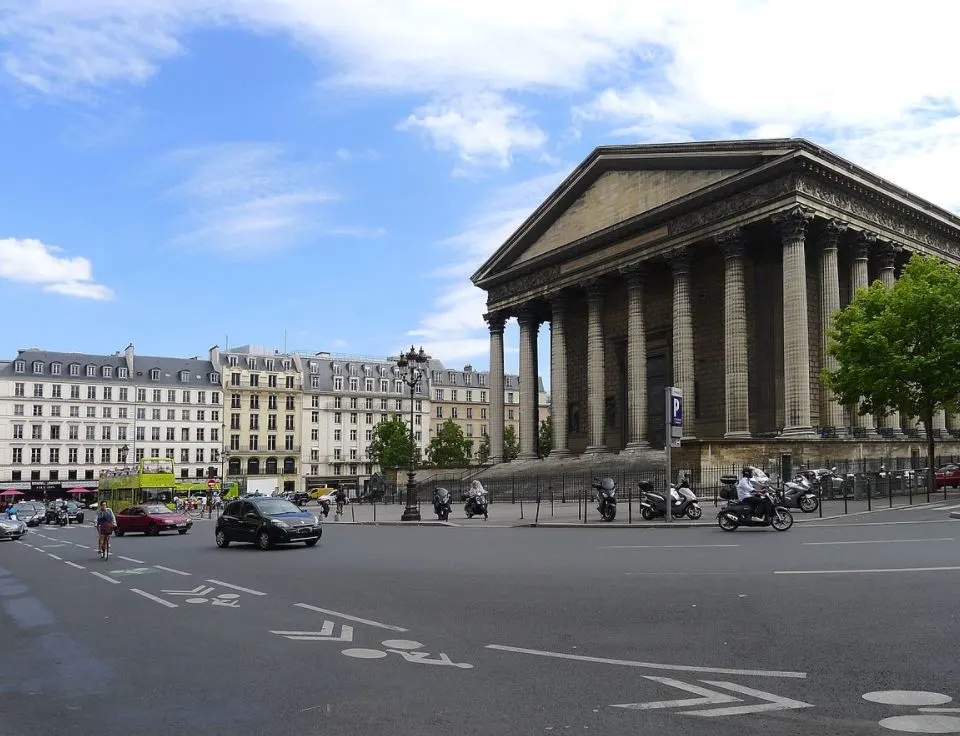
3. Two earlier attempts were made to build a new church
One of the most remarkable facts about la Madeleine is that the current church wasn’t the first attempt to build a new church in this location. Two earlier attempts were made in the 18th century to build a monumental church here.
The first attempt to build a church was made in 1757 and the cornerstone of this building was laid by the King of France on April 3, 1763. This church was supposed to resemble the Baroque church of Les Invalides.

This plan was halted just a year later and replaced with a new design that was based on the Pantheon in Rome. Work started in 1777 but was halted yet again because of the French Revolution which started in 1789.
The church would have been massive upon completion but only the portico was completed in 1789.
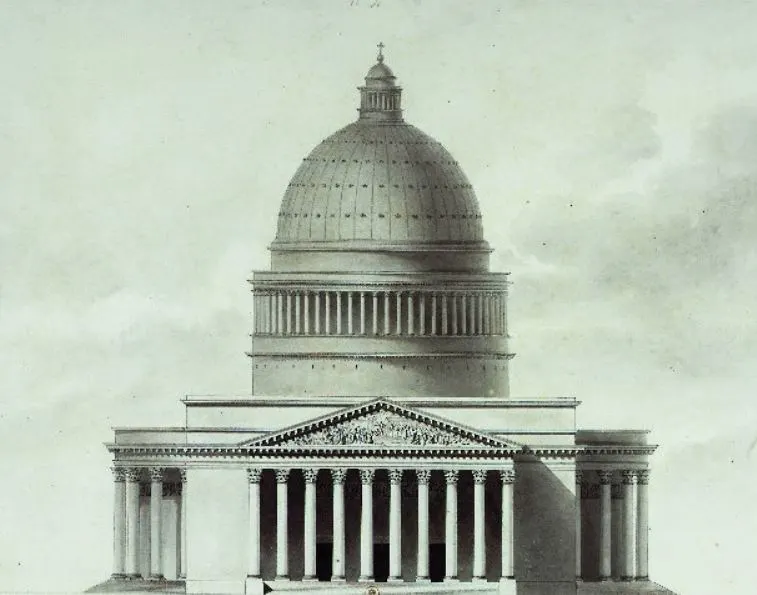
4. The structure was commissioned by Napoleon in 1806
During the reign of Napoleon, the project gained traction again as he commissioned a monument to be constructed in honor of the French Army. This structure was to become a “Temple de la Gloire de la Grande Armée” or “Temple to the Glory of the Great Army.”
An architectural competition was organized and only 1 submitted design was deemed suitable by Napoleon himself, that of Pierre-Alexandre Vignon (1763–1828) which proposed a temple resembling the enormous temples of antiquity.
Because the portico of the original design was already completed, this made construction a lot easier as well.
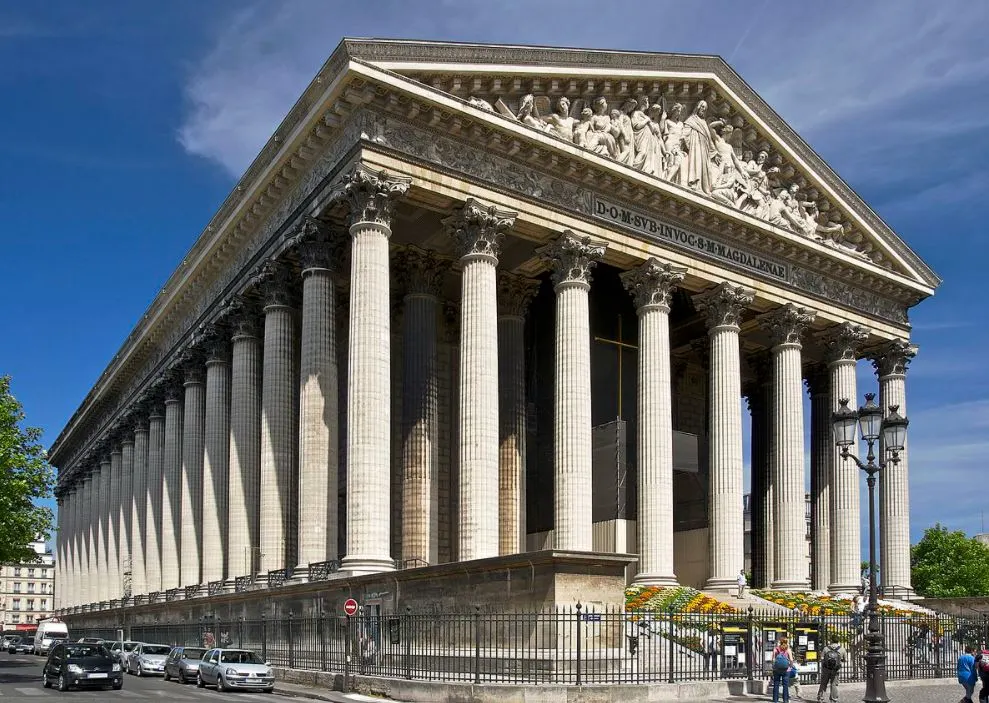
5. The design was based on an ancient Roman temple in Nîmes
The design of La Madeleine is in fact a bigger version of an existing temple and not one that stands in Rome or Athens, but one that can be found in the south of France.
This temple is referred to as the “Maison Carré,” which translates to “Square House,” and is situated in Nîmes. It’s one of the best-preserved ancient Roman temples and served as the inspiration for multiple other buildings, including the church in Paris but also the State Capitol in Virginia.
The latter structure was even designed by Thomas Jefferson!
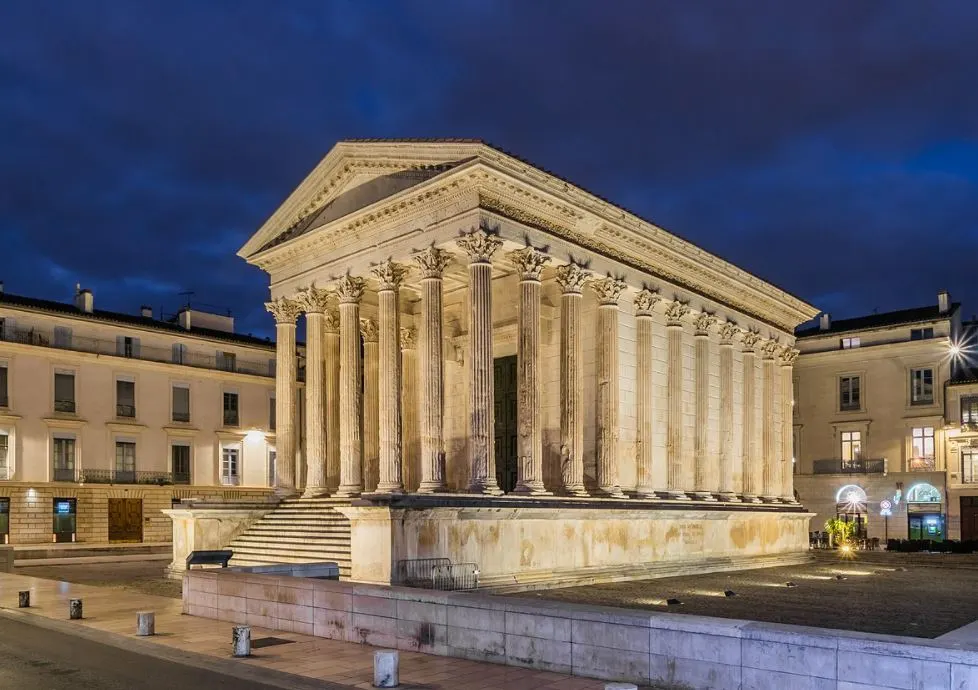
6. The purpose of the building changed after the Fall of Napoleon
Napoleon was finally defeated in 1815 and sent permanently into exile. This means that King Louis XVIII was in charge of the project back then and he decided to return the building to its original purpose which was to serve as a church.
This church was also to be dedicated to Mary Magdalene, just as the original one, and construction resumed shortly after.
The pediment had to be decorated in the late 1820s and another competition was held in 1828-1829. The scene depicted is The Last Judgement in which Mary Magdalene kneels for the damned souls.
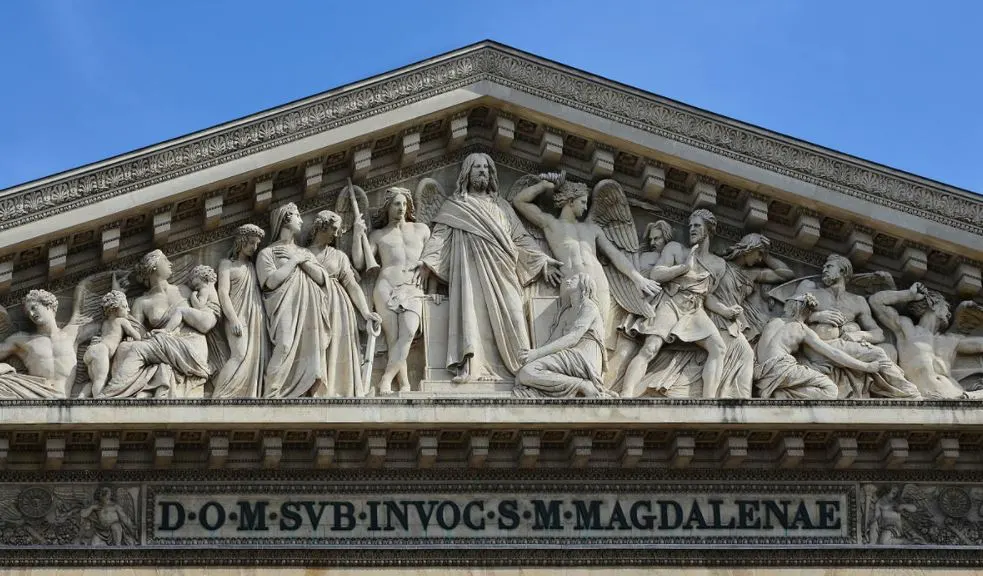
7. The building nearly had yet another purpose during the 1830s
After the completion of the sculpted decoration of the pediment, the nave was finally vaulted in 1831. This didn’t mean that the church was completed though because it would take until 1842 before the church was consecrated.
The delay during the 1830s was caused by the end of the Bourbon Restoration in 1830 and yet another period of indecisiveness for the project. It was briefly suggested that the building was to serve as a library and even a railway station.
All these suggestions were eventually shelved and the building was officially a consecrated church in 1842.
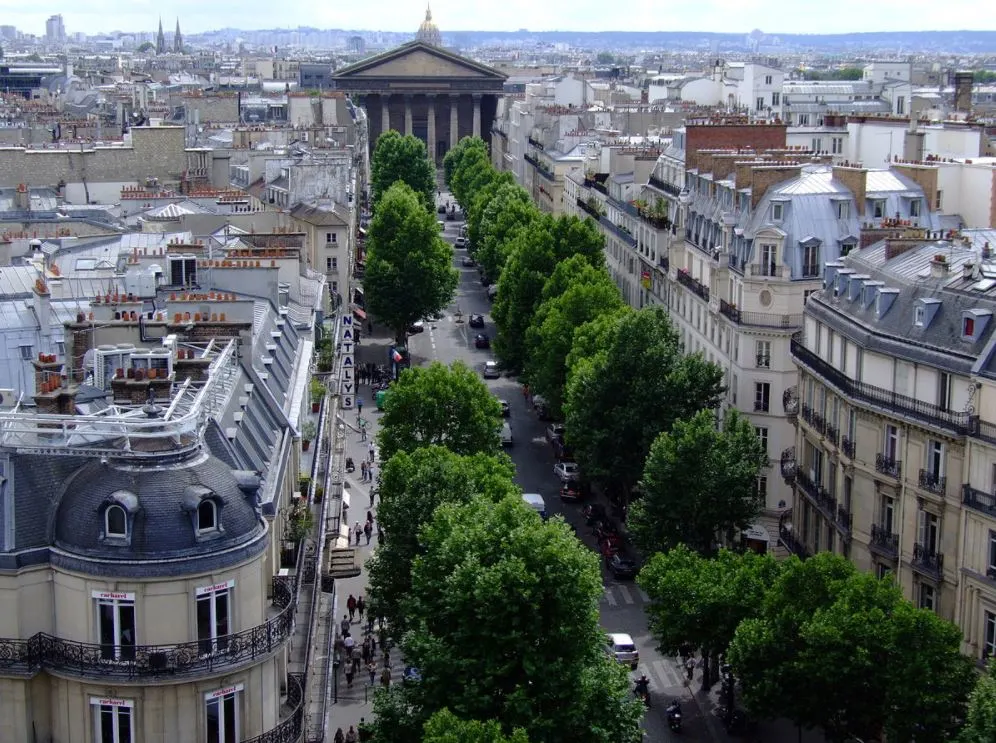
8. The church is much bigger than it initially appears to be
The entire building is supported by a total of 52 Corinthian columns that completely encircle the building. Each of these massive pillars stands 20 meters (66 feet) tall.
The building is huge as well and covers the equivalent size of a football pitch. It has a total length of 108 meters (354 feet) and a width of 43 meters (141 feet), which is huge!
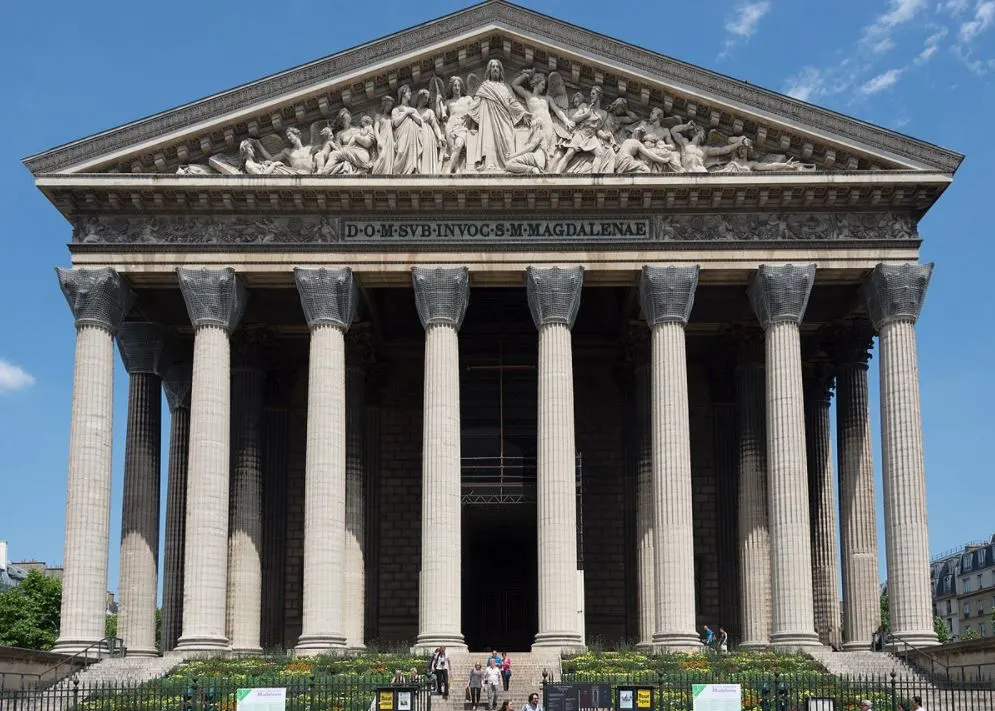
The design of the church is fairly simple as it features one enormous nave. This nave features 3 massive and marvelous domes which provide natural light into the building.
The design also features arched bays which are similar to those in other ancient structures such as bathhouses or basilicas. These interior architectural elements are gilded which makes the interior of La Madeleine an impressive sight to behold!
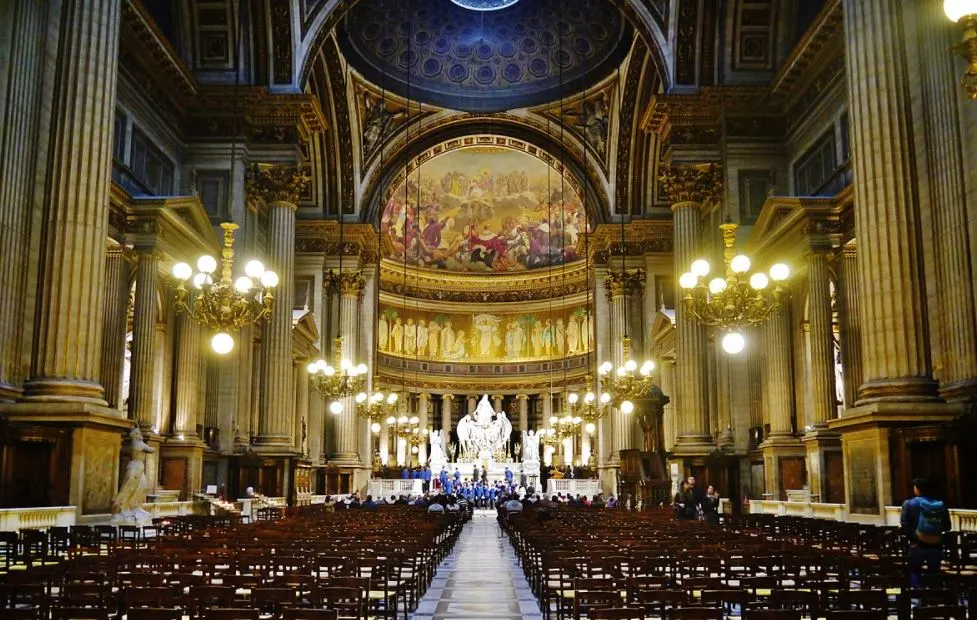
10. The basement of the church features a restaurant and lounge
The church is an important religious building today and daily masses and even weddings are conducted here. It’s also the parish church of the Archdiocese of Paris.
To accommodate the churchgoers and other visitors, a huge restaurant referred to as a “Foyer” has been integrated into the basement of the church. This means that it’s possible to eat or drink a coffee in the basement referred to as the “Foyer de La Madeleine,” pretty amazing!
